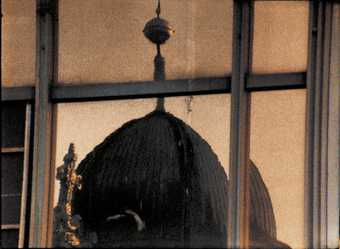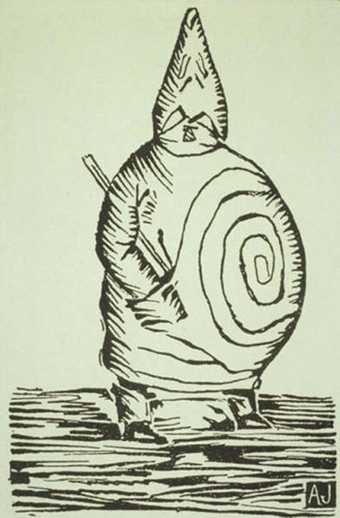For the past several decades art theorists have been wrestling with the consequences of fine art’s accelerated absorption into technologies of reproduction. Following Walter Benjamin’s qualified embrace of this situation in 1936, some have greeted technical replication as the final deliverance of art from outmoded notions of authorship, originality and uniqueness. The more democratic dissemination possible with photography, film and video positioned them as the contemporary artistic media. Others, however, reacted against the logic of the copy, turning their attention instead to the trace, the authentic remnant, the found object, the index. Paradoxically, photography has also been central to this position, owing to the influence of Roland Barthes’s Camera Lucida. My paper will attempt to unpick the logic of these two positions in order to rethink our current, profoundly ambivalent, attitude to replication.
In the late 1970s and 1980s, Walter Benjamin’s analysis of the effects of mechanical reproduction on art was mobilised for a particular purpose. As Diarmuid Costello has argued, Benjamin’s critique of ‘auratic’ art was used to counter the resurgence of large-scale neo-expressionist painting in the USA and Europe. For the editors of October magazine and others, this resurgence represented a challenge to post-conceptual and post-minimalist art. As a result, late modernist and neo-expressionist painting came to be construed as attempts to recover what Benjamin regarded as the failing aura of the work of art. Photography, the pre-eminent art of reproduction, provided the anti-thesis of these out-moded notions of artistic value – particularly if the imagery was appropriated from elsewhere, thereby inscribing repetition at the level of subject matter as well as technique.
Douglas Crimp’s Pictures exhibition of 1977 and his subsequent writing raised the profile of a group of artists, many of whom used photography (Sherrie Levine, Richard Prince, Cindy Sherman), and he positioned them as the antipodes of the new painting. To appropriate, copy, replicate became the new, inverted, ‘anti-aesthetic’ values. It was not until ‘The Photographic Activity of Post-Modernism’, 1980, that Benjamin became a key reference point. Crimp was careful, however, not to equate painting as a medium with aura for, as he correctly noted, aura has to do with modes of reception, not mediums. Rather, he makes the stronger claim that in the age of mechanical reproduction even a painting by Rembrandt will inevitably lose its auratic power because the effect of mechanical reproduction is ‘the dissociation of the work from the fabric of tradition’.
This position, articulated in the 1980s, still holds considerable sway. Its tenaciousness can probably be ascribed to the authority of Benjamin whose essay of 1936 is so often invoked. The most successful critics, therefore, have argued that a closer, wider reading of Benjamin would reveal a more complex picture. Yet it is fair to say that in 1936, he does regard photography and film as media better suited to the needs of a new revolutionary culture. What is objectionable, however, is Crimp’s deafness to the pathos in Benjamin’s essay, which it driven by ambivalence. It is true that, given the deepening political crisis, he called for technologies of art more attuned to the shock effects of contemporary life where quick, ‘close,’ collective, public reception would replace solitary contemplation of an opaque or ‘distant’ work of art. Yet Benjamin also is sensitive to the desire for auratic, aesthetic, experience in a world where it is always threatening to collapse into the copy and the commodity. I want to suggest that ‘the post-modern condition’ is precisely this situation, rather than the cheerful, wholesale elimination of aura. What is of interest in the context of this symposium is Benjamin’s account of the nature of our desire for an auratic mode of experience in terms that don not dismiss it as mere l’art pour l’art aestheticism. Read properly, Benjamin offers us insight into what most deeply motivates our resistance to replication.
Scholars wishing to question art and film theory’s reception of Benjamin, have appealed to his other texts where his phenomenology of the historical decline of aura is not so readily embraced as politically progressive. They note, for example, how auratic experience in nature or art is linked to the reciprocity of the gaze. ‘To experience the aura of the phenomenon means to invest it with the ability to look at us in return.’ It implies, then, an ethical attentiveness and receptivity to the other. Even things, in this utopian perspective, participate in intersubjective exchanges – something the surrealists fully appreciated. Aura is also bound up with the intertwining of memory and present experience. Benjamin thought that early photographic portraits emanated such incomparable beauty because of the long exposure time which allowed the subject ‘to focus his life in a moment rather than hurrying on past it’. It is as though the openness of the camera was met by another unprotected, open interiority. This explains why old photographs, as Barthes observed, have such an uncanny presence.
These thoughts lead one to suspect that the reason why replication causes consternation for some is the fear that the kind of experience involving inter-subjectivity, memory, the unconscious and exposure to the other, is in danger of disappearing. Of course, the artists Crimp wrote about may have actually been pointing to this danger by ironically repeating the commodity form in their work. Other artists, however, have been reviving certain surrealist, and indeed Benjaminian, tropes to both signal the danger and forestall it. If I have space for just one example, I want to refer to a work by Rodney Graham included in the show Tacita Dean curated in 2005, An Aside. Rheinmetall/Victoria 8 2003, is an installation that involved a large 35 mm cinema projector noisily projecting a series of static black-and-white images of a sleek 1930s German typewriter which was slowly buried by a silent fall of snow-like sifted flour. These just-obsolete technologies seem to condense both a promise for the future and a melancholic acknowledgement of the fading of those hopes. As ‘found objects’ they weave together past and future, memory and anticipation, and create a fabric of associations. Dean is also drawn to these objects, such as Sound Mirrors or Bubble House, dubbed by Hal Foster as ‘failed futuristic visions’. In short, these confident technologies that once participated in the shock of modernity now open themselves to reverie. The commodity fetish and advanced technologies of reproduction, now cast aside by the march of progress, become pensive. As the Editors of October concede in their 100 issue devoted to the theme obsolescence, the very dominance of technologies of reproduction have undermined their formerly critical dimension.
Tate Britain is pitted by shrapnel scars on its side; it bears the marks of the history to which it has been subject and so evokes collective memory. Wisely, the masonry was not repaired when the new entrance was built. Similarly, sculpture acquires a patina, both physical and historical, that links it with the passage of time. Some have suggested that Benjamin’s aura implies a fetishistic insulation of the autonomous work of art from the contingencies of history. Yet, just the opposite is the case. The difficult task of the museum is to conserve the work of art and where necessary even replicate it while protecting its vulnerable aura. In practical terms, this might mean that Tate should display Gabo’s plastic sculptures in such a way that the history of their failed experimental material is acknowledged.



